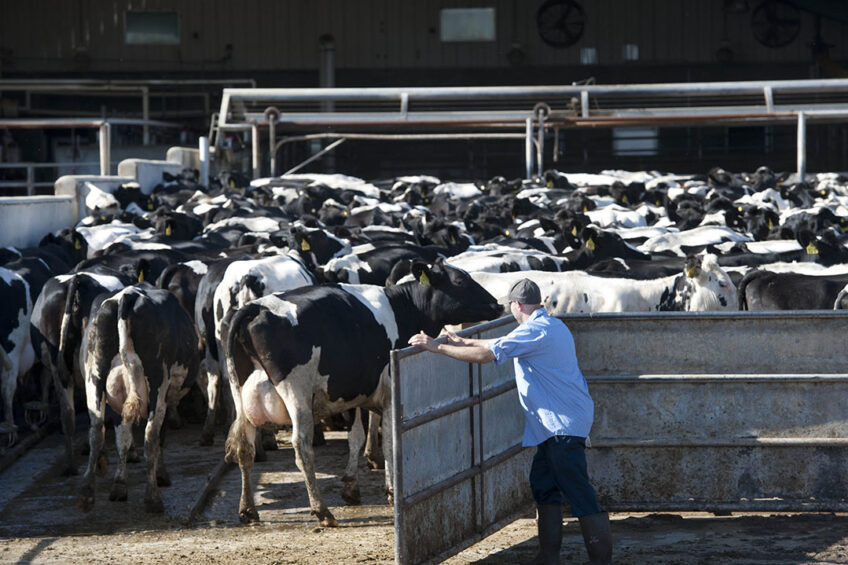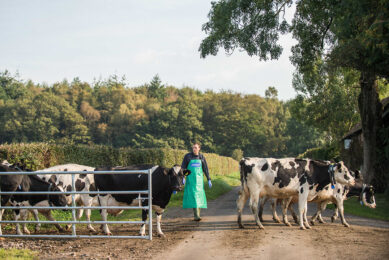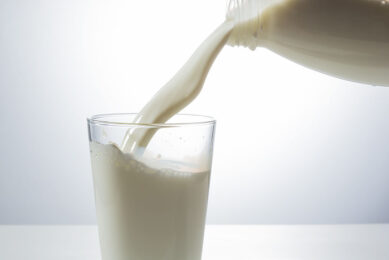USMCA and its effect on Canada’s dairy industry

At the end of September, the United States (US), Mexico and Canada announced the completion of negotiations of the new United States-Mexico-Canada Agreement, now being dubbed USMCA. What will this mean for the dairy industry in Canada?
While the new United States-Mexico-Canada Agreement preserves many of the key elements of its predecessor, the North American Free Trade Agreement (NAFTA), it has been revamped in a way that addresses key trade issues. Agriculture, and more specifically dairy, were top issues during the renegotiations. Over the past 25 years, trade in agriculture and agri-food products has nearly quadrupled in North America. In 2017, in Canada and the US alone, trade reached USD$ 48.5 billion. For the most part, USMCA will preserve existing commitments between the 3 countries, however some changes have been made.

Canadian concessions
For the time being, Canada has been able to hold on to its much-guarded supply management system, but it has made some concessions where dairy trade is concerned. As part of the overall agreement, Canada has agreed to:
- Provide new market access to the US in the form of tariff rate quotas for dairy, poultry, and egg products (3.6% for dairy),
- Tariff elimination for whey powder and margarine,
- Ensure the elimination of current milk classes 6 and 7 (component prices for these products will be calculated based on an agreed US reference price); and
- Establish a mechanism to monitor exports of skim milk powder, milk protein concentrate, and infant formula (above an agreed threshold these products will be subject to surcharges).
Essentially, the new deal will limit Canadian exports of skim milk powder, milk protein isolates, and infant formula. For the first two, the aggregate export cap will be 55,000 metric tons in the first year, decreasing to 35,000 metric tons in the second. Above this, exports will be charged an export surcharge of CAD$ 0.54 per kilogram. It should be noted that these caps are significantly below current export levels. The export cap for infant formula will be 13,333 metric tons in the first year, increasing to 40,000 metric tons in the second. Exports above this threshold will be charged CAD$ 4.25 per kilogram. The agriculture and agri-food sectors are major drivers of Canada’s economy. The Canadian Government believes that the USMCA will help Canada reach its goal of increasing agri-food exports to $ 75 billion annually by 2025.

Canadian dairy farmers respond
Following the announcement, Canadians didn’t take long to respond. Consumers expressed concerns over growth hormones used in US dairy production, and responded by urging their fellow Canadians to buy local. Dairy farmers expressed a mix of outrage and disappointment. “Despite the fact that NAFTA gave the US a trade surplus with Canada in dairy, Trump’s misinformed rhetoric won the negotiations of USMCA,” says Bruce Sargent, whose family operates a 60-cow dairy farm near Bowmanville, Ontario. “He won greater access to the Canadian supply-managed markets, while protecting his own farmers allowing no new free trade access to the US. We feel we were sacrificed to give Trump political steam for the midterm elections,” Mr Sargent continues. “US dairy farmers claim the deal will save their failing industry. The 4% access to the Canadian market is less than 0.35% of US production. The US wastes more than 0.35% daily in overproduction and farmers are already planning expansion to fill USMCA.” Courtney Denard and her husband, Rob, operate a dairy farm in Owen Sound, Ontario in Canada. The couple just invested CAD$ 1.3 million into a new robotic milking barn. Ms Denard followed up on comments made to Dairy Global for an earlier article on supply management in Canada. “Waiting to hear the news of the new trade agreement was stressful,” she says. “Not knowing what the future might hold or what the Canadian dairy sector was giving up in terms of trade was on our minds every day. My first initial reaction was, well, it could have been worse”, she continues. “That was quickly followed by ‘this is a death by a million cuts”, according to Ms Denard. This is why she and her husband have decided that their best course of action is to conduct business as usual until they learn more about the agreement. “There is still so much uncertainty around what the trade agreement means, and it’s been difficult to find accurate information on how it will impact Canadian dairy farmers directly. In the meantime, we‘ll continue to milk our cows and produce safe, quality milk for consumers.”
Rabobank’s Senior Dairy Analyst Tom Bailey digs into what has come out of the USMCA and how it affects dairy producers and processors around the world- Listen to the podcast here
Hashtag #BuyCanadian
In the days following the announcement, Ms Denard found hope in an unexpected place. Canadian consumers, she says, began using the hashtag #BuyCanadian as a way to show their support for Canadian-produced dairy products. “The hashtag #BuyCanadian was trending in days following the agreement announcement, and it’s still a topic my non-farming friends and family are bringing up in conversation,” says Ms Denard. “I think the Canadian dairy industry has an opportunity here to shine a light on our products and educate the consumer while interest is piqued.” Following the announcement that a deal had been reached, Dairy Global took the opportunity to follow up with Sylvain Charlebois, Professor of Food Distribution and Policy at Dalhousie University in Nova Scotia, as well. “For dairy, I honestly don’t think it’s a great deal,” says Mr Charlebois. “I mean, usually with trade deals in agriculture you tend to make concessions, but you do benefit from the trade deal in some way. But with USMCA, I fail to see any gains at all for agriculture, which makes the deal odd for the sector. The concessions we made were significant, I think, in terms of percentages,” he continues. “And still we don’t have any roadmaps, any sort of strategy moving forward, as supply management is being eroded by these multilateral deals. And that would include the one with Asia and with Europe as well,” he adds. Mr Charlebois is particularly concerned that Canada is not trade focused, which gives the upper hand to countries with which they sign agreements. He thinks the dairy sector should work to nurture and support innovation, but believes it is, unfortunately, content with the status quo. “In today’s economy, that’s really not possible because things are really changing everywhere,” he says. “For the sector to advocate the status quo is really utterly naïve and unreasonable.” At this time, USMCA has not been ratified. Mr Charlebois expects the signing of deal to become an issue in the upcoming election in Canada.
Join 13,000+ subscribers
Subscribe to our newsletter to stay updated about all the need-to-know content in the dairy sector, two times a week.










